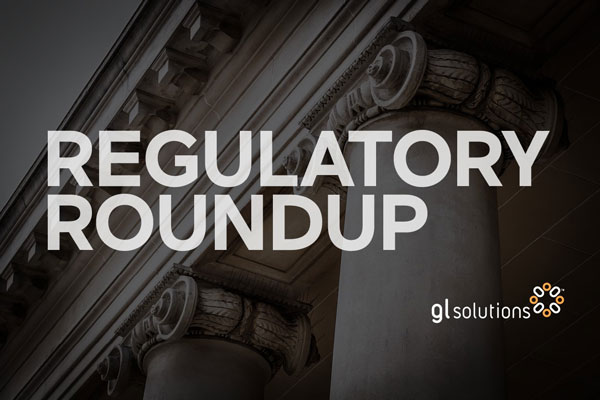Effective public complaint management serves as the backbone of trust between your regulatory agency and the communities you serve. When handled efficiently, complaints transform into valuable opportunities to improve operations, address systemic issues and demonstrate accountability. By adopting the best practices, your government agency builds credibility, maintains public confidence and ensures compliance with standards.
Below, we explore several actionable strategies to elevate your agency’s complaint management framework.
1. Establish Clear Complaint Channels
Simplify the process for filing complaints. Offer multiple channels—such as online forms, email, click-to-phone and mobile applications through your public website, enabling anyone to voice their concerns conveniently. Promote agency transparency by outlining the steps involved in submitting a complaint and communicating timelines for responses. Publish these details prominently on your website, social media platforms and public-facing documents.
Accommodate various communities, including non-English speakers and individuals with disabilities. Provide multilingual support, accessible web tools and easy-to-follow instructions to ensure access for all.
2. Prioritize Prompt Acknowledgment
Respond quickly to acknowledge receipt of complaints. Acknowledge every submission—whether serious or minor—to show people their voices matter. Automated systems efficiently handle initial acknowledgments while capturing essential details. A well-crafted acknowledgment email or message informs complainants their concerns reach the right place while setting the tone for resolution.
Include key information in acknowledgments, such as a unique case reference number, an expected resolution timeline and contact details for further inquiries. Providing these details immediately reduces frustration and builds trust early in the process.
3. Leverage Automation for Efficiency
Manual complaint management often leads to delays, errors and inefficiencies. Modern regulatory software streamlines complaint processing through automation. Automate repetitive tasks like data entry, case assignment and status tracking to reduce workload and eliminate bottlenecks.
Automation ensures consistency in response times and increases case visibility. Regulatory software with centralized dashboards that track complaints in real-time assigns cases to relevant staff automatically based on predefined criteria like case type, priority level or geographic location. Automated systems also send status updates to complainants, improving communication and reducing follow-up inquiries.
4. Focus on Root Cause Analysis
Resolve complaints systematically by identifying and addressing underlying causes. For example, recurring complaints about delays in license renewals might highlight inefficiencies in internal workflows. Analyze trends in complaints using data analytics tools to pinpoint patterns and areas requiring improvement.
Select a platform that integrates robust reporting features that aggregate data and generate insights. Use these insights to implement corrective actions—such as redesigning processes, enhancing staff training or updating policies—to prevent future issues.
5. Maintain Open and Transparent Communication
Transparency fosters trust. Communicate openly with complainants throughout the resolution process. Share regular automated updates about case progress, especially if delays occur. Use plain language to explain complex regulatory decisions, ensuring your audience fully understands your response.
Leverage communication strategies that promote regulatory engagement, such as offering self-service portals where users track complaint status independently. By keeping individuals informed, you reduce frustration and demonstrate accountability.
6. Implement Tiered Complaint Resolution
Design a tiered resolution system to handle complaints efficiently based on complexity and urgency. For minor issues, resolve matters quickly at the frontline level. For more complex cases, escalate them to specialized teams with the expertise to investigate thoroughly.
Automated platforms streamline this tiered approach by routing complaints automatically to the appropriate team or department. Use built-in workflows to ensure timely resolution at each stage and set escalation protocols for cases requiring higher-level intervention.
7. Regularly Evaluate and Improve Processes
Conduct regular audits of your complaint management practices to identify gaps and areas for improvement. Solicit feedback from both complainants and staff to understand pain points in your current system.
Adopt performance metrics to evaluate your processes. Key performance indicators (KPIs) like average resolution time, percentage of resolved complaints and customer satisfaction scores provide valuable benchmarks. Use these metrics to refine your strategies and demonstrate accountability to stakeholders.
8. Promote Accountability and Oversight
Hold your agency accountable by creating clear policies and guidelines for complaint management. Assign roles and responsibilities within your team to ensure no case falls through the cracks.
Establish oversight mechanisms to monitor compliance with your policies. For example, appoint an independent review panel to evaluate the fairness and effectiveness of complaint resolutions. Transparency in these processes reassures the public that their concerns receive impartial attention.
9. Embrace Technology for Data-Driven Decision Making
Leverage technology to collect, analyze and act on complaint data. Regulatory software offers advanced analytics capabilities to uncover trends and provide actionable insights. Use this data to identify systemic issues, predict emerging challenges and allocate resources more effectively.
For instance, if data reveals a surge in complaints related to a specific service, prioritize improvements in that area. Data-driven decision-making enhances your regulatory agency’s ability to address root causes proactively and allocate your staff and budget resources where they impact the most.
10. Foster a Culture of Continuous Improvement
Encourage a mindset within your government agency that views complaints as opportunities for growth. Share success stories internally with your staff to highlight the positive changes arising from complaint resolution efforts. Recognize and reward employees who excel in complaint management, reinforcing its importance to your agency’s mission.
Create feedback loops where insights from complaint data inform broader organizational strategies. This practice ensures ongoing alignment with public expectations and regulatory standards.
11. Measure Public Satisfaction
Evaluate the effectiveness of your complaint management system by measuring public satisfaction. Conduct surveys or follow-up interviews with complainants after their cases reach resolution. Ask questions about their experience with response times, communication clarity and overall satisfaction with the process.
Use this feedback to identify areas for improvement and celebrate successes. Agencies that actively listen to public feedback and act on it cultivate trust and loyalty among their stakeholders.
Elevate Your Complaint Management Process with GL Suite
Adopting these best practices positions your regulatory agency as a proactive, responsive and trustworthy regulatory authority. By prioritizing accessibility, transparency and efficiency, you not only resolve complaints effectively but also strengthen relationships with the communities you serve. Leverage regulatory agency software like GL Suite to streamline processes and gain actionable insights, ensuring your agency remains agile and adaptive to public needs.
Time to Modernize
GL Solutions helps your regulatory agency run, grow and adapt through modern software and automation that helps solve your agency’s greatest challenges. To learn more, contact us.
To receive the latest regulatory news delivered to your inbox each week, subscribe to our newsletter.


